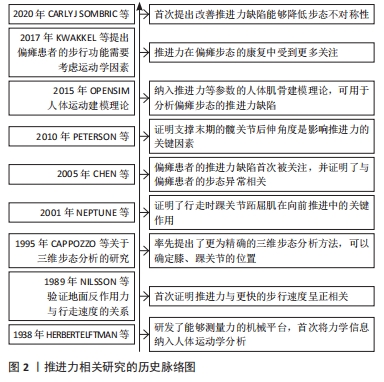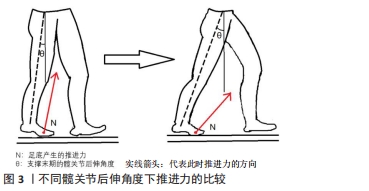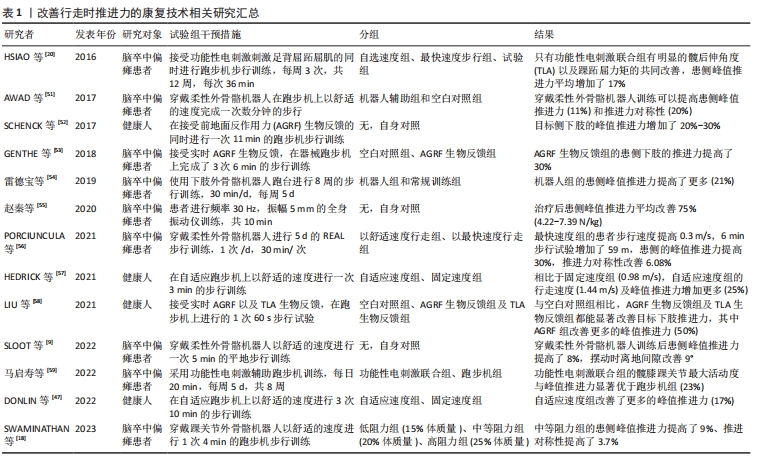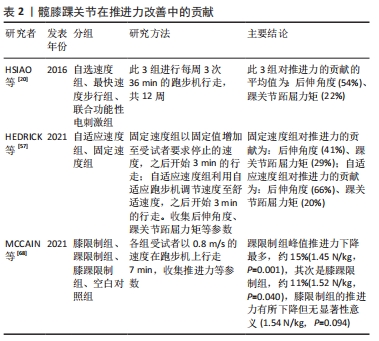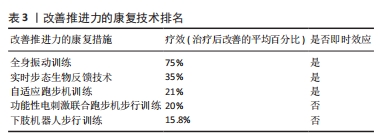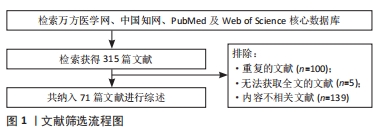[1] PAN YT, KANG I, JOH J, et al. Effects of bilateral assistance for hemiparetic gait post-stroke using a powered hip exoskeleton. Ann Biomed Eng. 2023; 51(2):410-421.
[2] LIU K, YIN M, CAI Z. Research and application advances in rehabilitation assessment of stroke. J Zhejiang Univ Sci B. 2022;23(8):625-641.
[3] BOYNE P, BILLINGER SA, REISMAN DS, et al. Optimal intensity and duration of walking rehabilitation in patients with chronic stroke: a randomized clinical trial. JAMA Neurol. 2023;80(4):342-351.
[4] MAZZOLI D, BASINI G, PRATI P, et al. Indices of loading and propulsive ability in the gait of patients with chronic stroke with equinus foot deviation: a correlation study. Front Hum Neurosci. 2022;15:771392.
[5] SAUDER NR, MEYER AJ, ALLEN JL, et al. Computational design of fastfes treatment to improve propulsive force symmetry during post-stroke gait: a feasibility study. Front Neurorobot. 2019;13:80.
[6] BOWDEN MG, BALASUBRAMANIAN CK, NEPTUNE RR, et al. Anterior-posterior ground reaction forces as a measure of paretic leg contribution in hemiparetic walking. Stroke. 2006;37(3):872-876.
[7] KWAKKEL G, LANNIN NA, BORSCHMANN K, et al. Standardized measurement of sensorimotor recovery in stroke trials: consensus-based core recommendations from the stroke recovery and rehabilitation roundtable. Neurorehabil Neural Repair. 2017;31(9):784-792.
[8] 张达,钱竞光.脑卒中偏瘫患者步态动力学分析的研究进展[J].湖北体育科技,2021,40(7):641-645,649.
[9] SLOOT L, BAE J, BAKER L, et al. O 089 - A soft robotic exosuit assisting the paretic ankle in patients post-stroke: effect on muscle activation during overground walking. Gait Posture. 2022;95:217-218.
[10] ELFTMAN H. The measurement of the external force in walking. Science. 1938;88(2276):152-153.
[11] NILSSON J, THORSTENSSON A. Ground reaction forces at different speeds of human walking and running. Acta Physiol Scand. 1989;136(2):217-227.
[12] CAPPOZZO A, CATANI F, CROCE UD, et al. Position and orientation in space of bones during movement: anatomical frame definition and determination. Clin Biomech (Bristol, Avon). 1995;10(4):171-178.
[13] NEPTUNE RR, KAUTZ SA, ZAJAC FE. Contributions of the individual ankle plantar flexors to support, forward progression and swing initiation during walking. J Biomech. 2001;34(11):1387-1398.
[14] PETERSON CL, CHENG J, KAUTZ SA, et al. Leg extension is an important predictor of paretic leg propulsion in hemiparetic walking. Gait Posture. 2010;32(4):451-456.
[15] CHEN G, PATTEN C, KOTHARI DH, et al. Gait differences between individuals with post-stroke hemiparesis and non-disabled controls at matched speeds. Gait Posture. 2005;22(1):51-56.
[16] SOMBRIC CJ, TORRES-OVIEDO G. Augmenting propulsion demands during split-belt walking increases locomotor adaptation of asymmetric step lengths. J Neuroeng Rehabil. 2020;17(1):69.
[17] 宋和胜,钱竞光,唐潇.基于软件OpenSim的人体运动建模理论及其应用领域概述[J].医用生物力学,2015,30(4):373-379.
[18] SWAMINATHAN K, PORCIUNCULA F, PARK S, et al. Ankle-targeted exosuit resistance increases paretic propulsion in people post-stroke. J Neuroeng Rehabil. 2023;20(1):85.
[19] SANTUCCI V, ALAM Z, LIU J, et al. Immediate improvements in post-stroke gait biomechanics are induced with both real-time limb position and propulsive force biofeedback. J Neuroeng Rehabil. 2023;20(1):37.
[20] HSIAO H, KNARR BA, POHLIG RT, et al. Mechanisms used to increase peak propulsive force following 12-weeks of gait training in individuals poststroke. J Biomech. 2016;49(3):388-395.
[21] ALLEN JL, KAUTZ SA, NEPTUNE RR. Step length asymmetry is representative of compensatory mechanisms used in post-stroke hemiparetic walking. Gait Posture. 2011;33(4):538-543.
[22] DENG W, LIN M, YU S, et al. Effects of hip joint angle on quadriceps recruitment pattern during knee extension in healthy individuals: analysis by ultrasound-based shear-wave elastography. Front Physiol. 2022;13: 836435.
[23] LIU Z, XIN H, CHOPP M. Axonal remodeling of the corticospinal tract during neurological recovery after stroke. Neural Regen Res. 2021;16(5):939-943.
[24] PALMER JA, HSIAO H, AWAD LN, et al. Symmetry of corticomotor input to plantarflexors influences the propulsive strategy used to increase walking speed post-stroke. Clin Neurophysiol. 2016;127(3):1837-1844.
[25] CECATTO RB, BATTISTELLA LR. Improving motor recovery after cortical stroke using cerebellar non-invasive transcranial stimulation. Minerva Med. 2021;112(3):409-411.
[26] SRIVASTAVA S, SEAMON BA, MAREBWA BK, et al. The relationship between motor pathway damage and flexion-extension patterns of muscle co-excitation during walking. Front Neurol. 2022;13:968385.
[27] THOMAS FA, DIETZ V, SCHRAFL-ALTERMATT M. Automatic gain control of neural coupling during cooperative hand movements. Sci Rep. 2018; 8(1):5959.
[28] REVI DA, ALVAREZ AM, WALSH CJ, et al. Indirect measurement of anterior-posterior ground reaction forces using a minimal set of wearable inertial sensors: from healthy to hemiparetic walking. J Neuroeng Rehabil. 2020; 17(1):82.
[29] KUHMAN D, HURT CP. The timing of locomotor propulsion in healthy adults walking at multiple speeds. Hum Mov Sci. 2019;68:102524.
[30] HU Z, REN L, HU D, et al. Speed-related energy flow and joint function change during human walking. front bioeng biotechnol. 2021;9:666428.
[31] ACUñA SA, TYLER ME, THELEN DG. Individuals with chronic mild-to-moderate traumatic brain injury exhibit decreased neuromuscular complexity during gait. Neurorehabil Neural Repair. 2022;36(4-5):317-327.
[32] 谢哲东,李斌,陈晨,等.基于ZMP理论的下肢外骨骼机器人稳定性分析[J].机械工程师,2022(5):1-5.
[33] AWAD LN, KNARR BA, KUDZIA P, et al. The interplay between walking speed, economy, and stability after stroke. J Neurol Phys Ther. 2023;47(2):75-83.
[34] LIANG JN, HO KY, LEE YJ, et al. Slow walking in individuals with chronic post-stroke hemiparesis: speed mediated effects of gait kinetics and ankle kinematics. Brain Sci. 2021;11(3):365.
[35] HAK L, HOUDIJK H, BEEK PJ, et al. Steps to take to enhance gait stability: the effect of stride frequency, stride length, and walking speed on local dynamic stability and margins of stability. PLoS One. 2013;8(12):e82842.
[36] BROWNE MG, FRANZ JR. Does dynamic stability govern propulsive force generation in human walking? R Soc Open Sci. 2017;4(11):171673.
[37] LORA-MILLAN JS, SANCHEZ-CUESTA FJ, ROMERO JP, et al. A unilateral robotic knee exoskeleton to assess the role of natural gait assistance in hemiparetic patients. J Neuroeng Rehabil. 2022;19(1):109.
[38] BALASUBRAMANIAN CK, BOWDEN MG, NEPTUNE RR, et al. Relationship between step length asymmetry and walking performance in subjects with chronic hemiparesis. Arch Phys Med Rehabil. 2007;88(1):43-49.
[39] KEMPEN JC, DOORENBOSCH CA, KNOL DL, et al. Newly identified gait patterns in patients with multiple sclerosis may be related to push-off quality. Phys Ther. 2016;96(11):1744-1752.
[40] ROERDINK M, BEEK PJ. Understanding inconsistent step-length asymmetries across hemiplegic stroke patients: impairments and compensatory gait. Neurorehabil Neural Repair. 2011;25(3):253-258.
[41] FELIUS RAW, GEERARS M, BRUIJN SM, et al. Reliability of IMU-based gait assessment in clinical stroke rehabilitation. Sensors (Basel). 2022;22(3):908.
[42] YAMAMOTO R, SASAKI S, KUWAHARA W, et al. Effect of exoskeleton-assisted body weight-supported treadmill training on gait function for patients with chronic stroke: a scoping review. J Neuroeng Rehabil. 2022;19(1):143.
[43] CAMPANINI I, MERLO A. Reliability, smallest real difference and concurrent validity of indices computed from GRF components in gait of stroke patients. Gait Posture. 2009;30(2):127-131.
[44] ROWLAND DM, LEWEK MD. Linking gait mechanics with perceived quality of life and participation after stroke. PLoS One. 2022;17(9):e0274511.
[45] ALINGH JF, GROEN BE, KAMPHUIS JF, et al. Task-specific training for improving propulsion symmetry and gait speed in people in the chronic phase after stroke: a proof-of-concept study. J Neuroeng Rehabil. 2021; 18(1):69.
[46] HSIAO H, HIGGINSON JS, BINDER-MACLEOD SA. Baseline predictors of treatment gains in peak propulsive force in individuals poststroke. J Neuroeng Rehabil. 2016;13:2.
[47] DONLIN MC, PARISER KM, DOWNER KE, et al. Adaptive treadmill walking encourages persistent propulsion. Gait Posture. 2022;(93):246-251.
[48] STRAMEL DM, WINTERBOTTOM L, STEIN J, et al. Overground robotic gait trainer mTPAD improves gait symmetry and weight bearing in stroke survivors. Bioengineering (Basel). 2023;10(6):698.
[49] PARISER KM, DONLIN MC, DOWNER KE, et al. Adaptive treadmill control can be manipulated to increase propulsive impulse while maintaining walking speed. J Biomech. 2022;133:110971.
[50] YAMAMOTO S, MOTOJIMA N, KOBAYASHI Y, et al. Ankle-foot orthosis with an oil damper versus nonarticulated ankle-foot orthosis in the gait of patients with subacute stroke: a randomized controlled trial. J Neuroeng Rehabil. 2022;19(1):50.
[51] AWAD LN, BAE J, O’DONNELL K, et al. A soft robotic exosuit improves walking in patients after stroke. Sci Transl Med. 2017;9(400):eaai9084.
[52] SCHENCK C, KESAR TM. Effects of unilateral real-time biofeedback on propulsive forces during gait. J Neuroeng Rehabil. 2017;14(1):52.
[53] GENTHE K, SCHENCK C, EICHOLTZ S, et al. Effects of real-time gait biofeedback on paretic propulsion and gait biomechanics in individuals post-stroke. Top Stroke Rehabil. 2018;25(3):186-193.
[54] 雷德宝,吴校林,朱锐,等.下肢机器人训练对脑卒中偏瘫患者三维步态分析系统测试结果的影响[J].临床和实验医学杂志,2019,18(12): 1323-1327.
[55] 赵秦,魏慧,王威,等.全身振动训练对脑卒中患者步态的影响[J].中国康复医学杂志,2020,35(6):676-681.
[56] PORCIUNCULA F, BAKER T C, ARUMUKHOM REVI D, et al. Targeting paretic propulsion and walking speed with a soft robotic exosuit: a consideration-of-concept trial. Front Neurorobot. 2021;15:689577.
[57] HEDRICK EA, PARKER SM, HSIAO H, et al. Mechanisms used to increase propulsive forces on a treadmill in older adults. J Biomech. 2021;115: 110139.
[58] LIU J, SANTUCCI V, EICHOLTZ S, et al. Comparison of the effects of real-time propulsive force versus limb angle gait biofeedback on gait biomechanics. Gait Posture. 2021;83:107-113.
[59] 马启寿,廖燕锬,李中元,等.FES辅助跑步机训练提高脑卒中下肢偏瘫患者步行能力的研究[J].按摩与康复医学,2022,13(14):22-25, 28.
[60] GASSERT R, DIETZ V. Rehabilitation robots for the treatment of sensorimotor deficits: a neurophysiological perspective. J Neuroeng Rehabil. 2018;15(1):46.
[61] ESQUENAZI A, TALATY M, PACKEL A, et al. The ReWalk powered exoskeleton to restore ambulatory function to individuals with thoracic-level motor-complete spinal cord injury. Am J Phys Med Rehabil. 2012;91(11):911-921.
[62] CHEN L, CHEN C, WANG Z, et al. A novel lightweight wearable soft exosuit for reducing the metabolic rate and muscle fatigue. Biosensors (Basel). 2021;11(7):215.
[63] SLOOT LH, BAKER LM, BAE J, et al. Effects of a soft robotic exosuit on the quality and speed of overground walking depends on walking ability after stroke. J Neuroeng Rehabil. 2023;20(1):113.
[64] DING Y, KIM M, KUINDERSMA S, et al. Human-in-the-loop optimization of hip assistance with a soft exosuit during walking. Sci Robot. 2018;3(15): eaar5438.
[65] AWAD LN, KUDZIA P, REVI D A, et al. Walking faster and farther with a soft robotic exosuit: Implications for post-stroke gait assistance and rehabilitation. IEEE Open J Eng Med Biol. 2020;(1):108-115.
[66] SIVIY C, BAKER L M, QUINLIVAN B T, et al. Opportunities and challenges in the development of exoskeletons for locomotor assistance. Nat Biomed Eng. 2023;7(4):456-472.
[67] MORRIS L, DITEESAWAT RS, RAHMAN N, et al. The-state-of-the-art of soft robotics to assist mobility: a review of physiotherapist and patient identified limitations of current lower-limb exoskeletons and the potential soft-robotic solutions. J Neuroeng Rehabil. 2023;20(1):18.
[68] MCCAIN EM, LIBERA TL, BERNO ME, et al. Isolating the energetic and mechanical consequences of imposed reductions in ankle and knee flexion during gait. J Neuroeng Rehabil. 2021;18(1):21.
[69] RAY NT, REISMAN DS, HIGGINSON JS. Walking speed changes in response to user-driven treadmill control after stroke. J Biomech. 2020;(101):109643.
[70] JAQUELINE DA, CUNHA M, RECH KD, et al. Functional electrical stimulation of the peroneal nerve improves post-stroke gait speed when combined with physiotherapy. A systematic review and meta-analysis. Ann Phys Rehabil Med. 2021;64(1):101388.
[71] RAY NT, REISMAN DS, HIGGINSON JS. Combined user-driven treadmill control and functional electrical stimulation increases walking speeds poststroke. J Biomech. 2021;124:110480.
|

